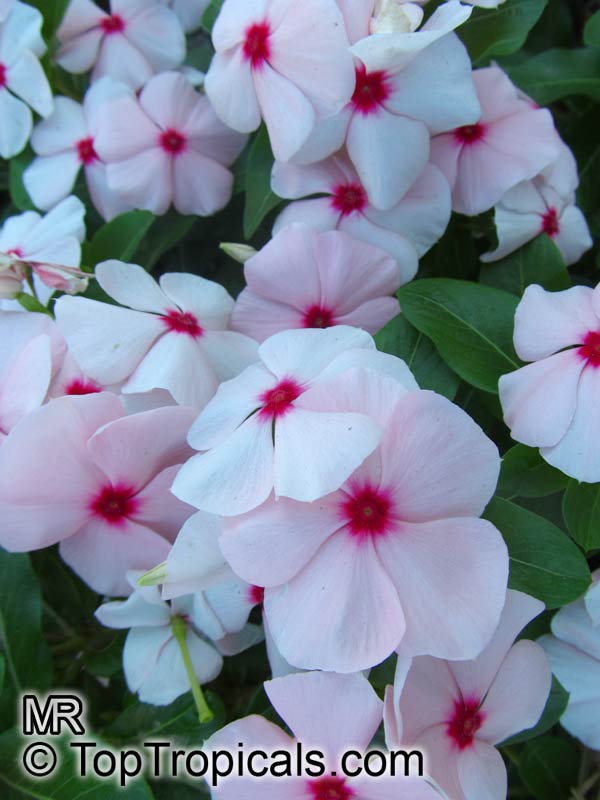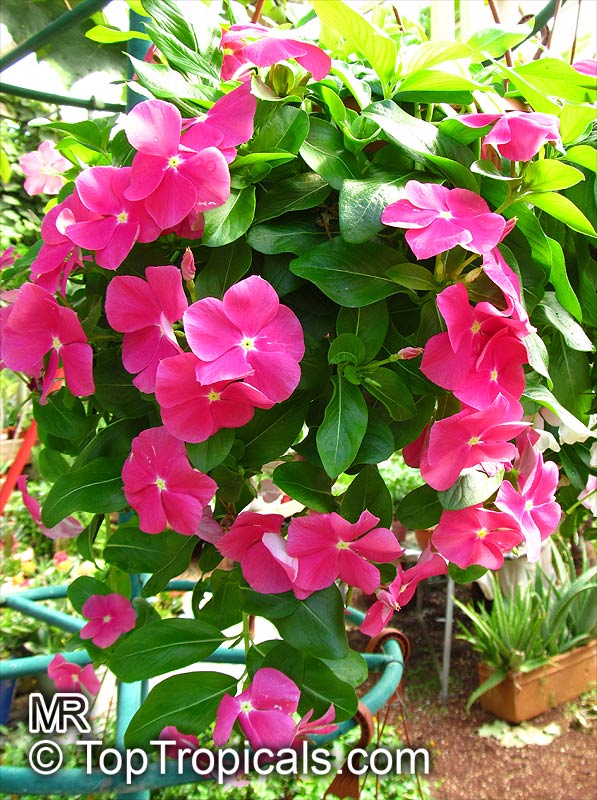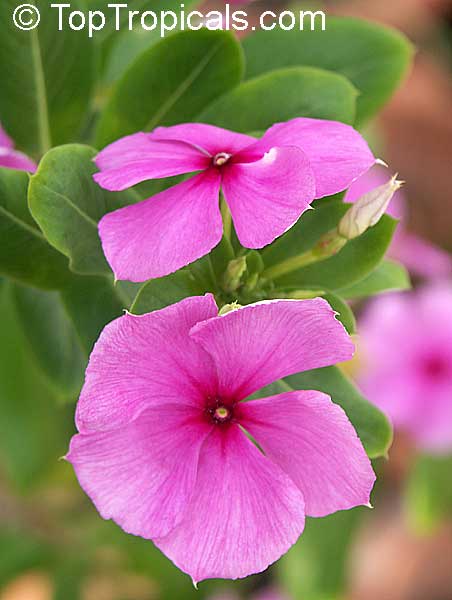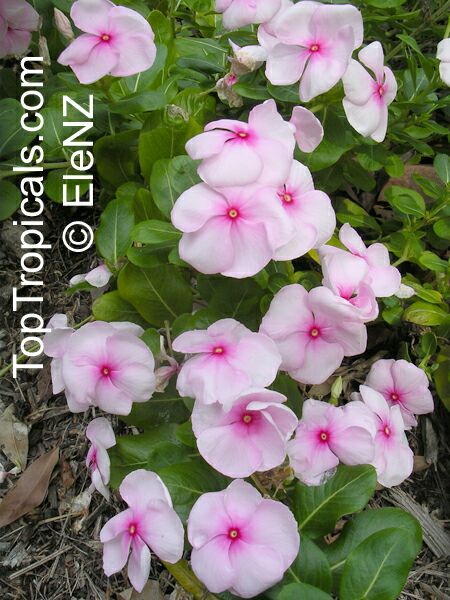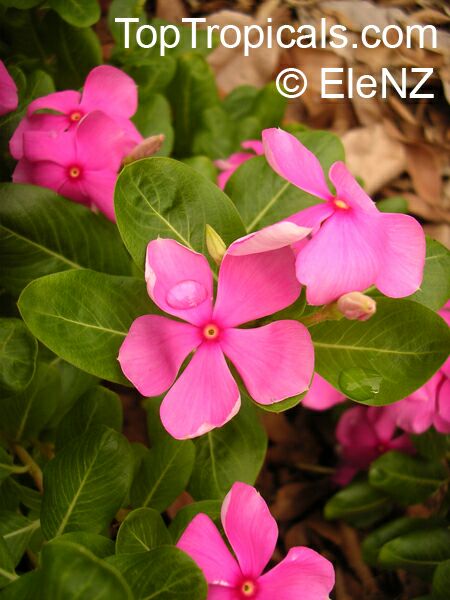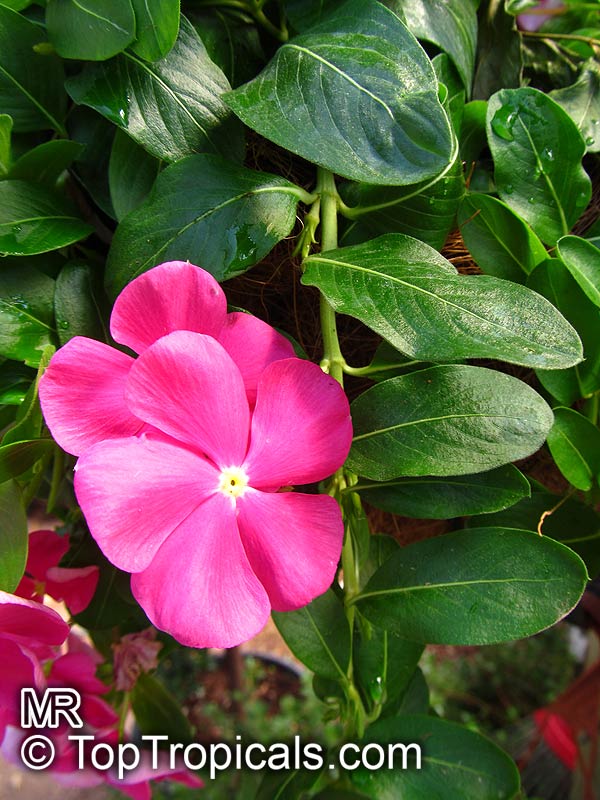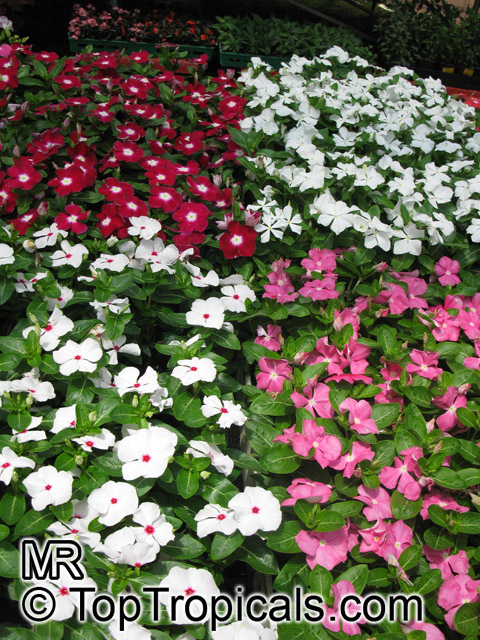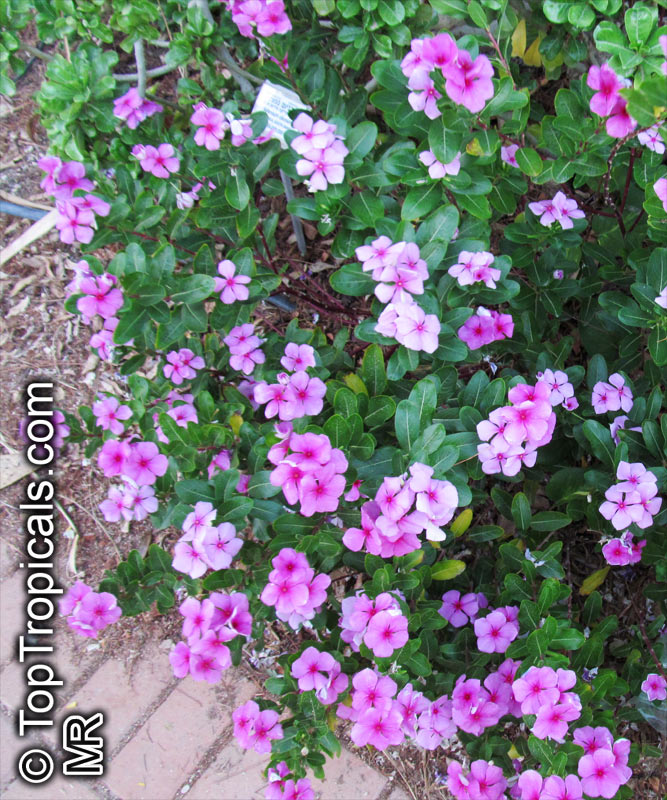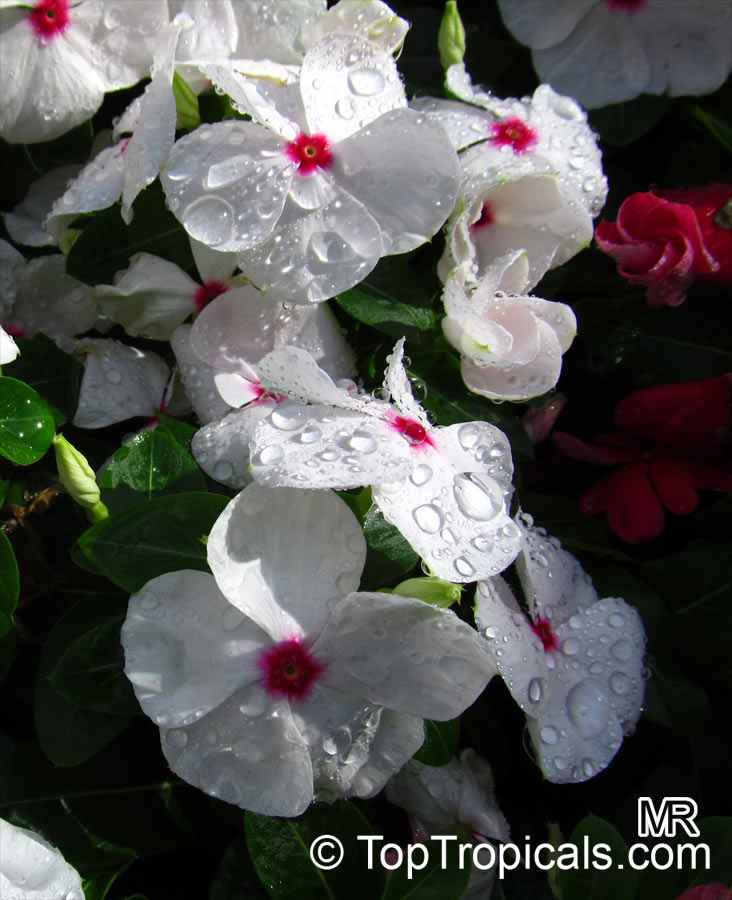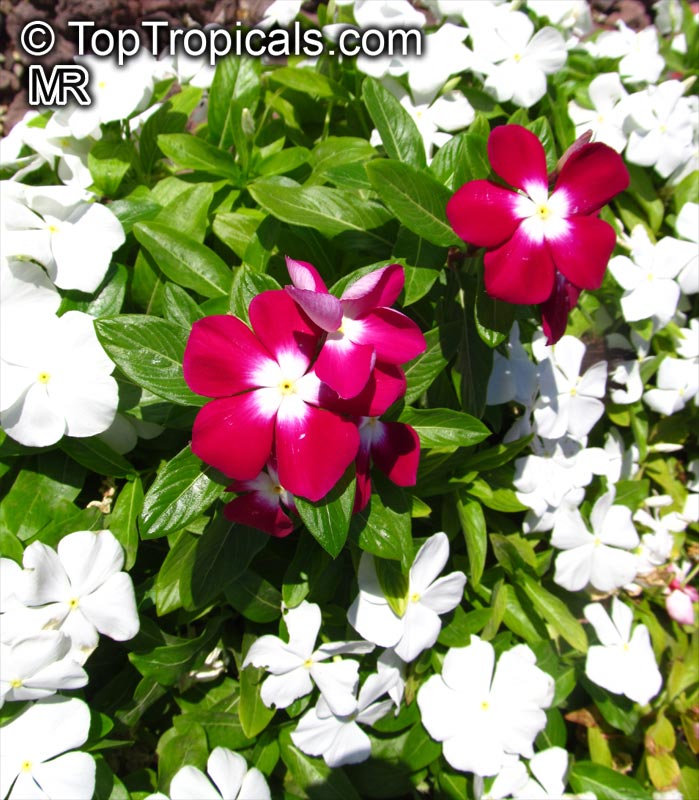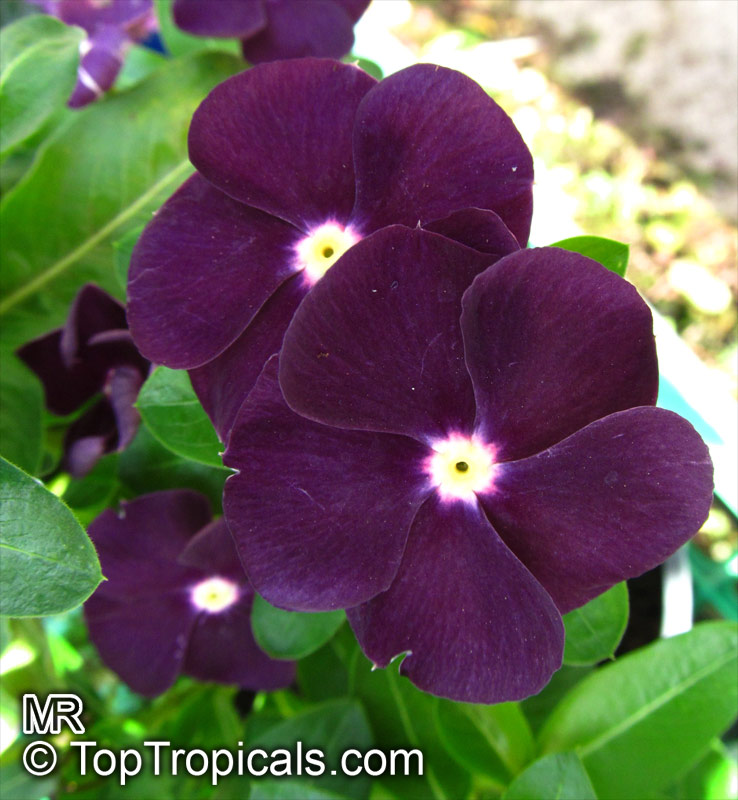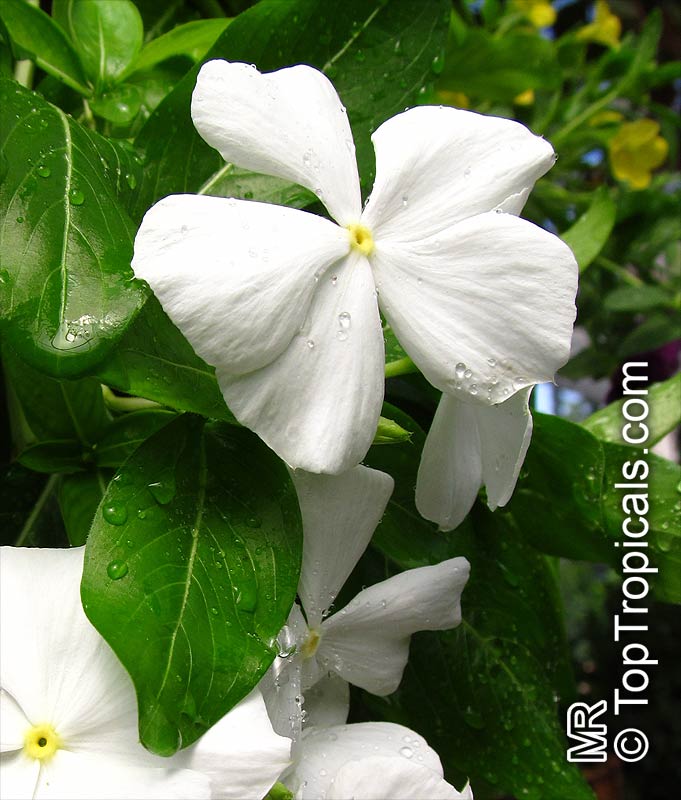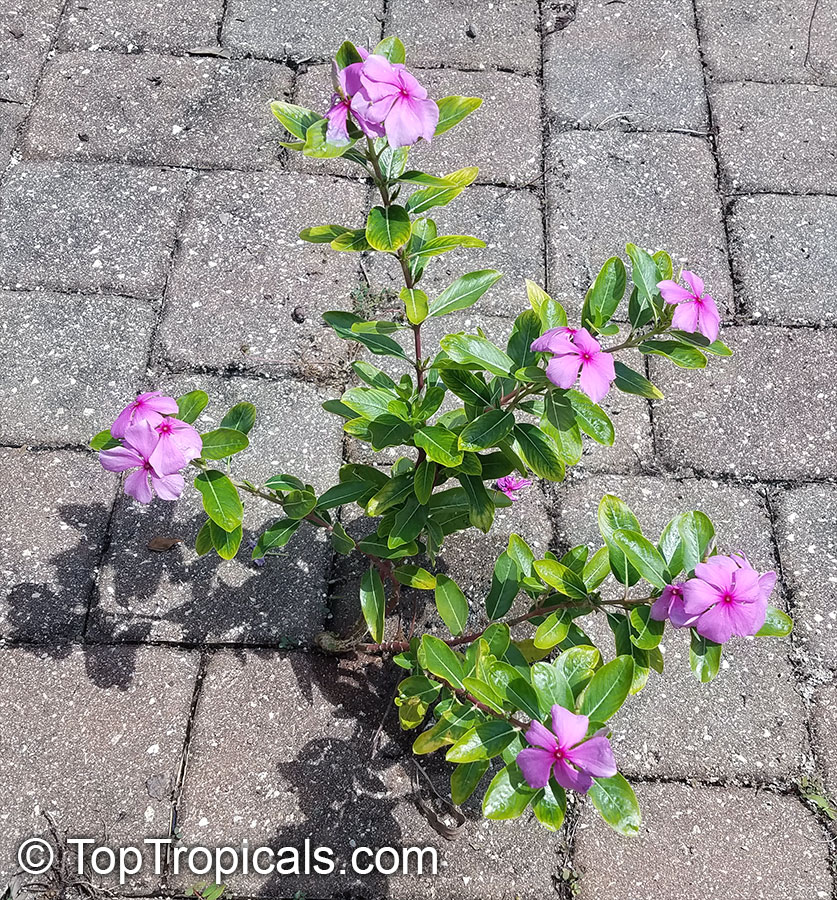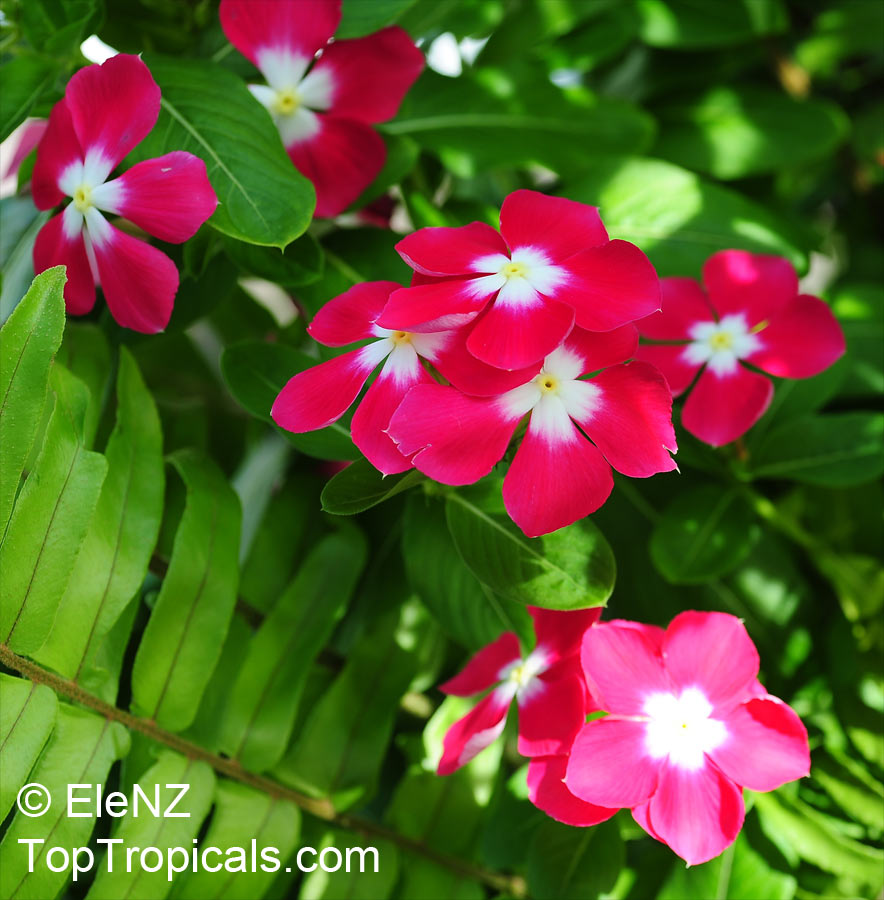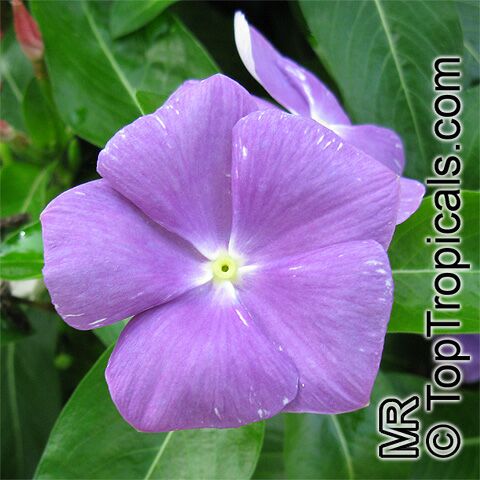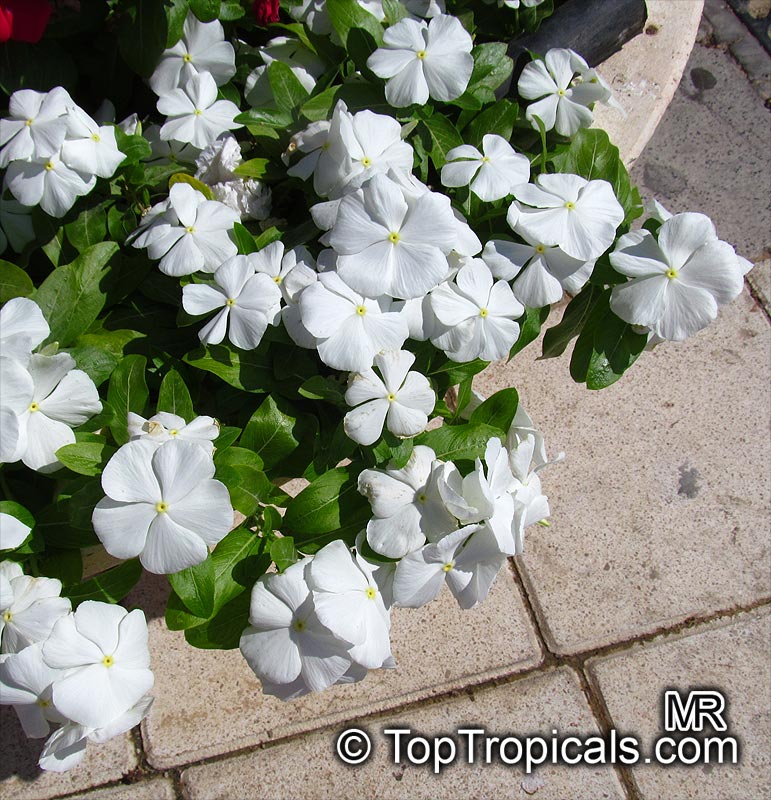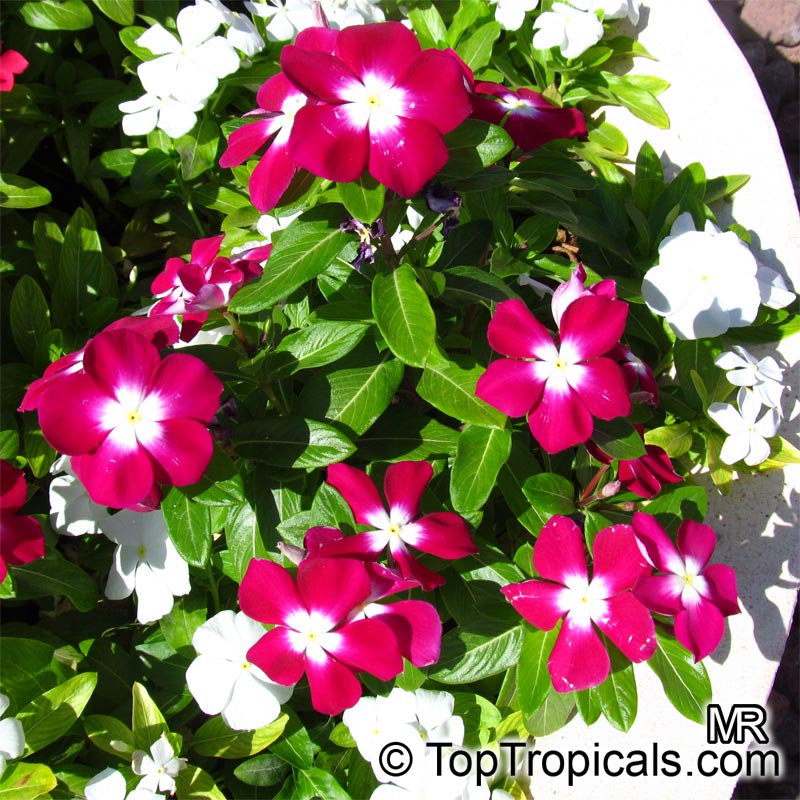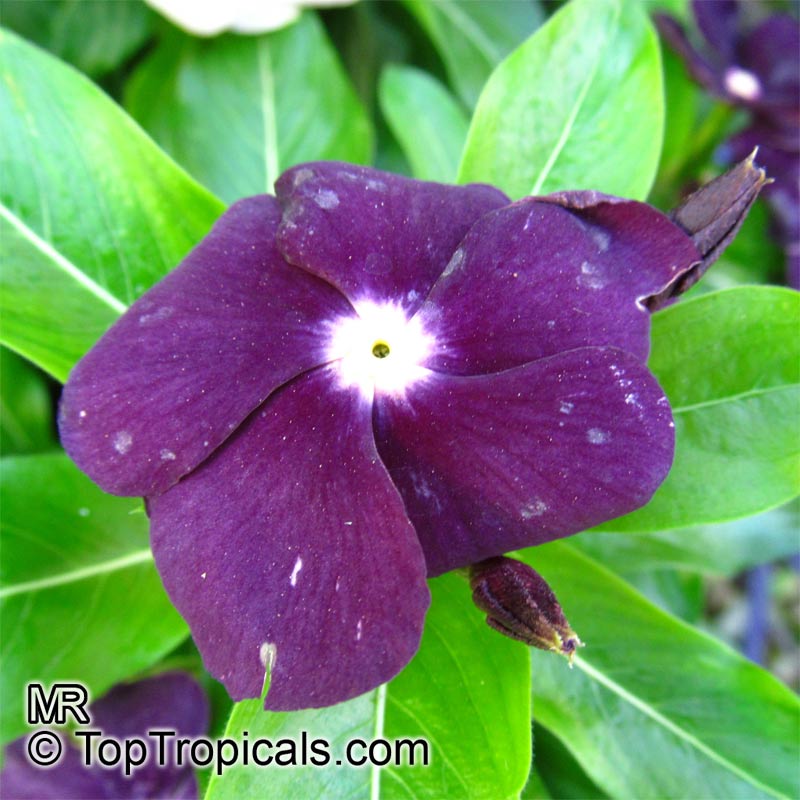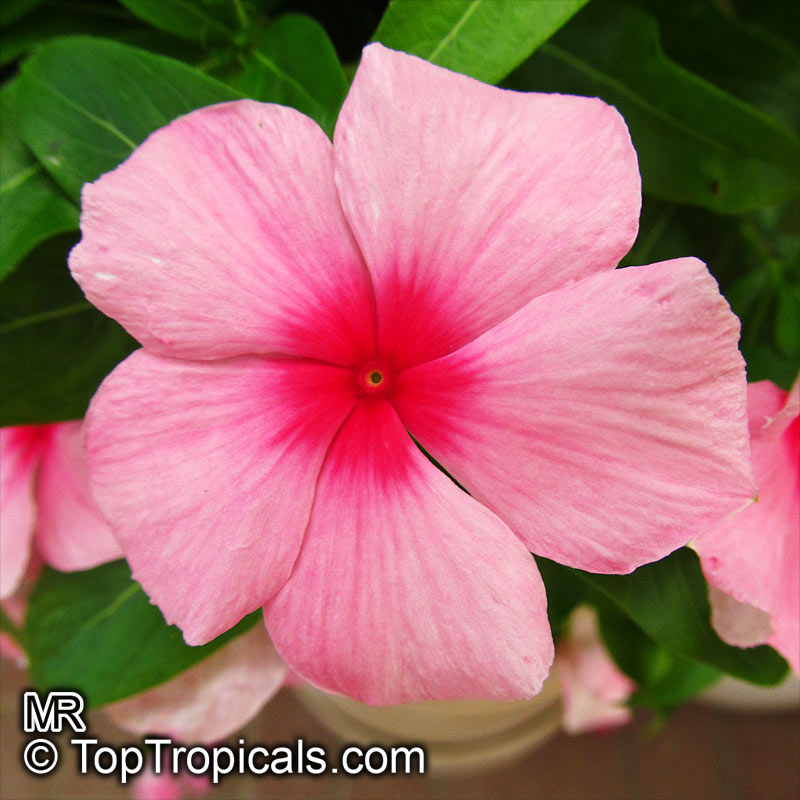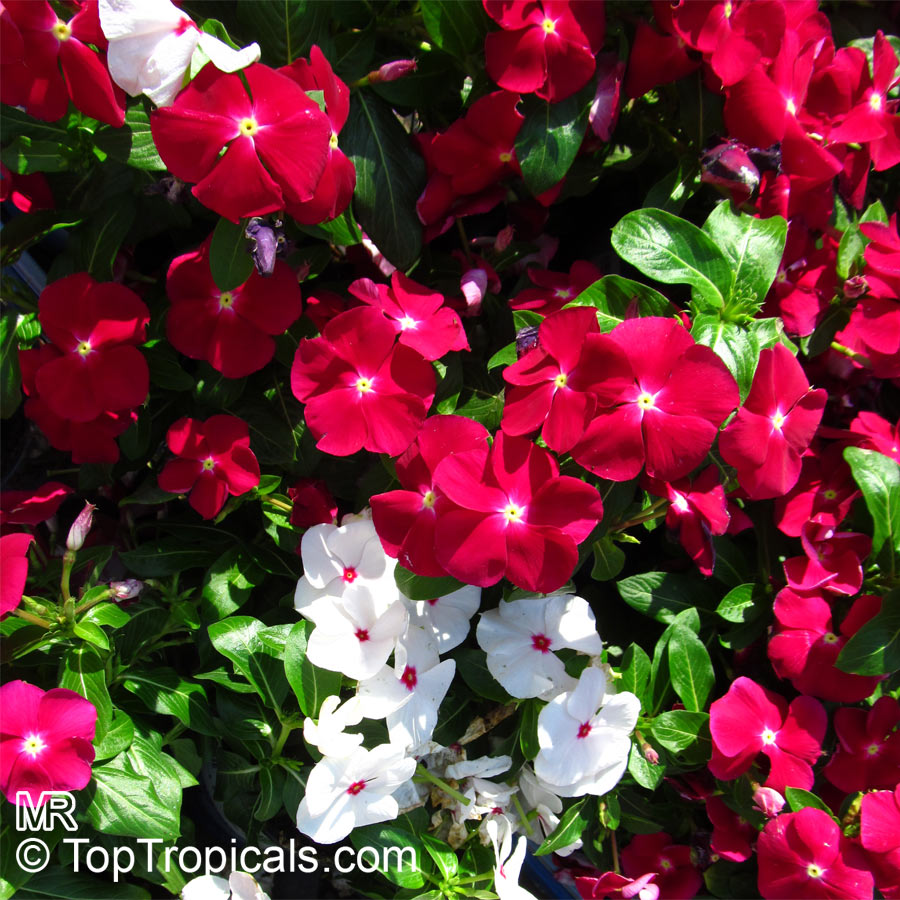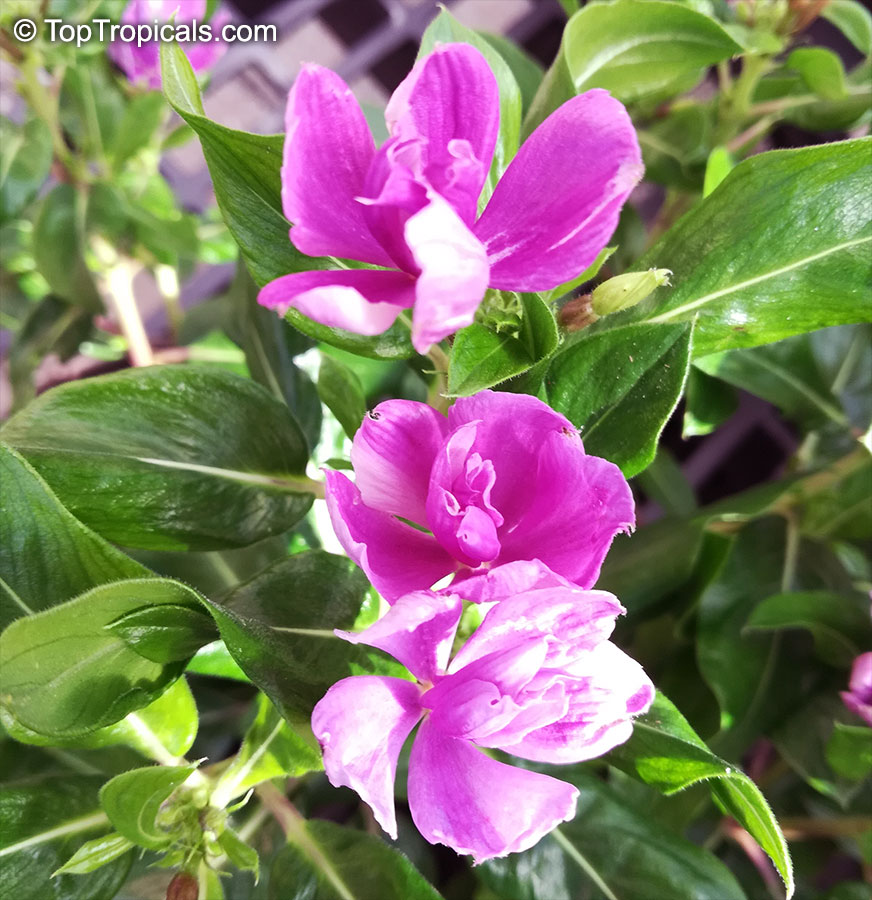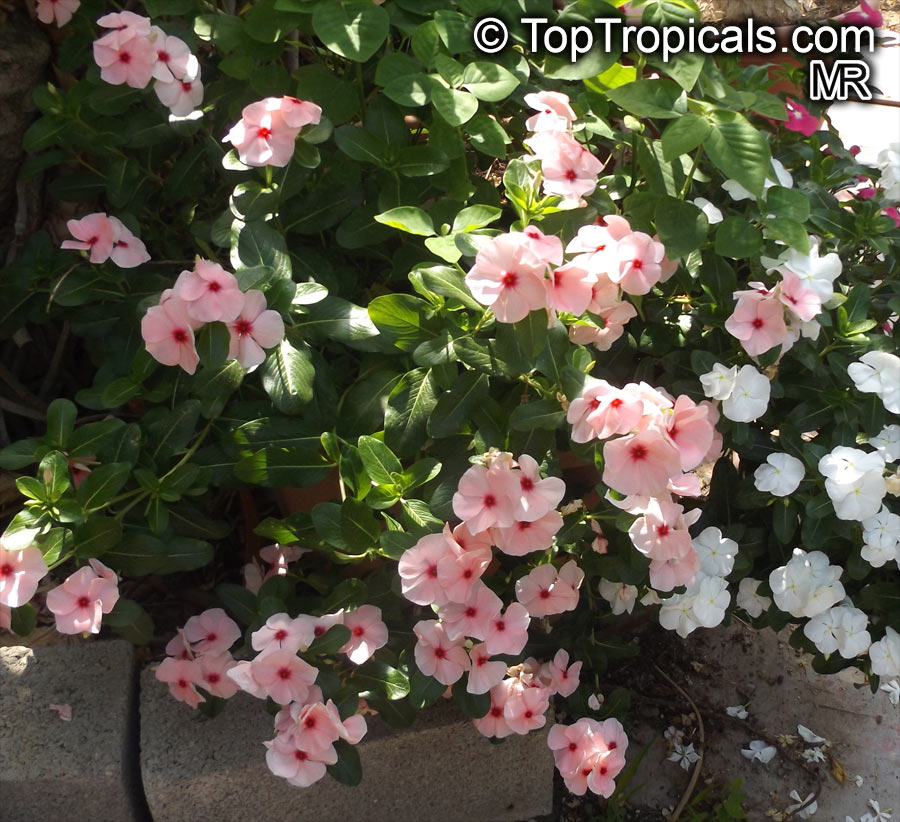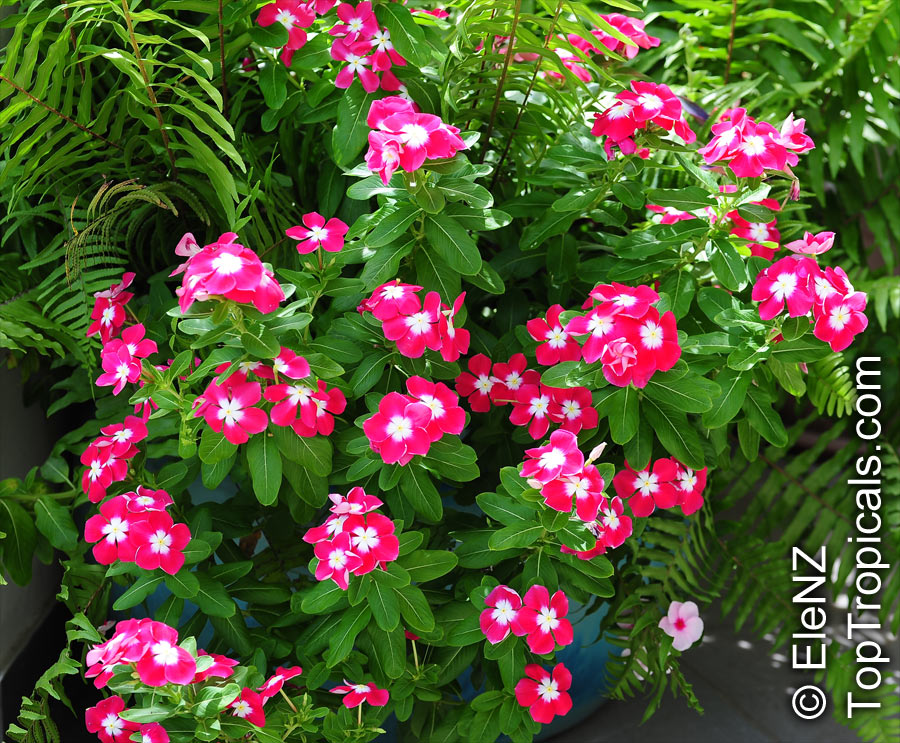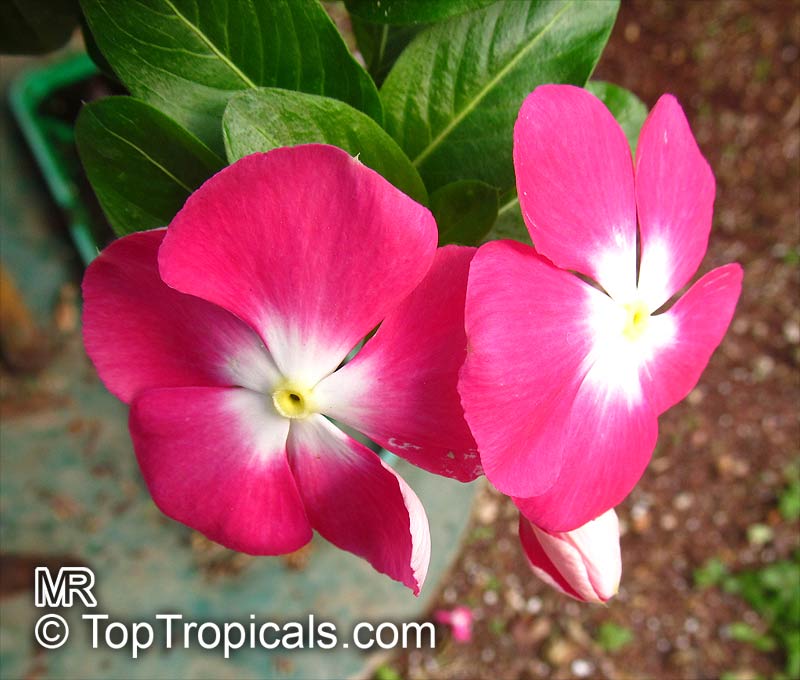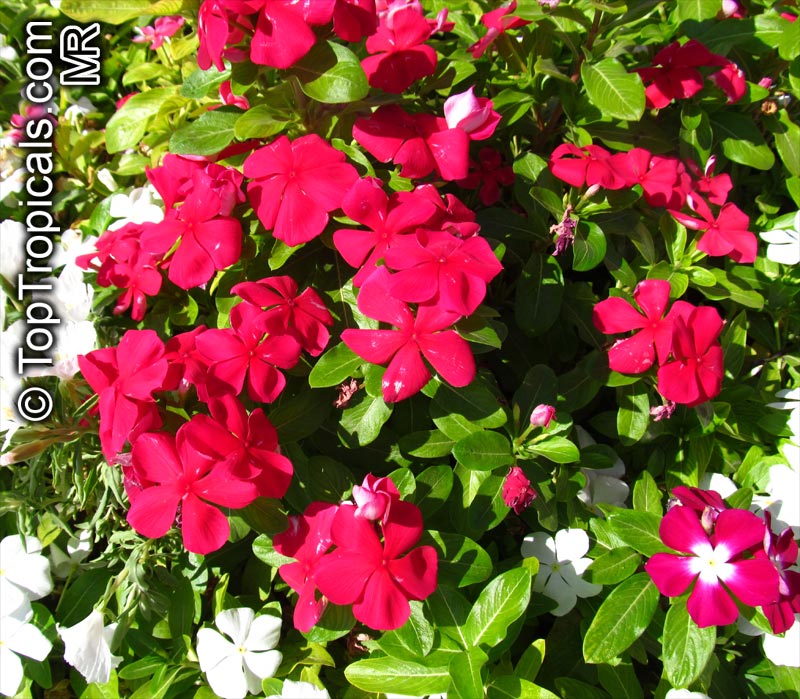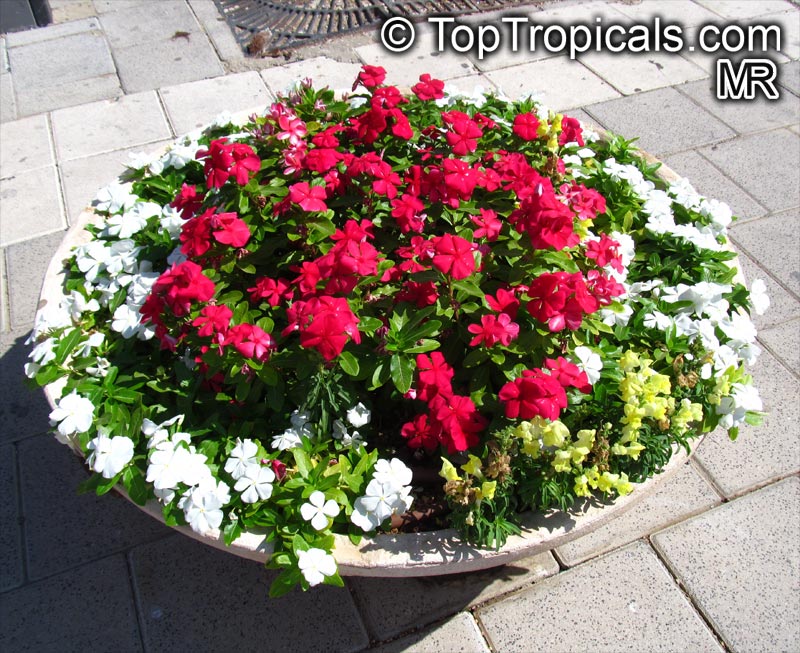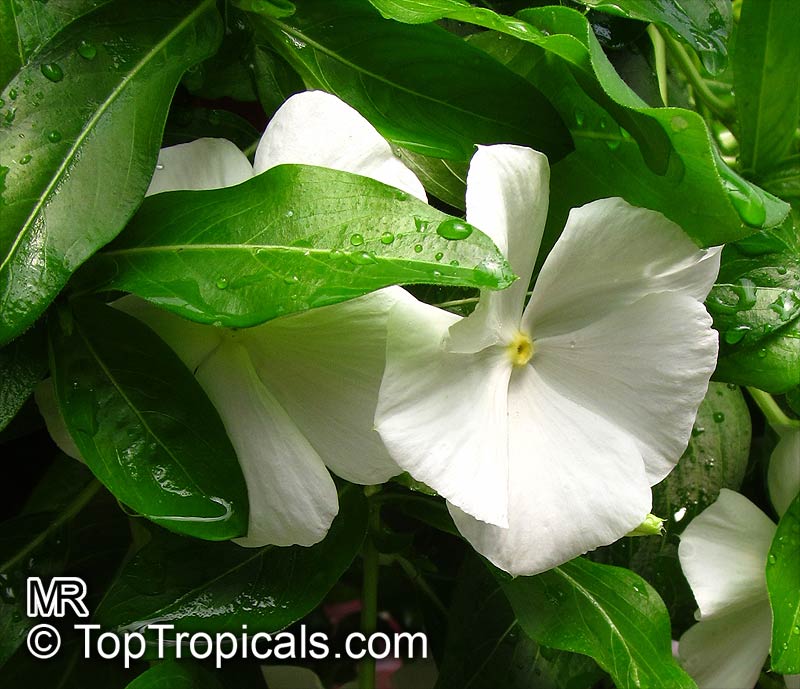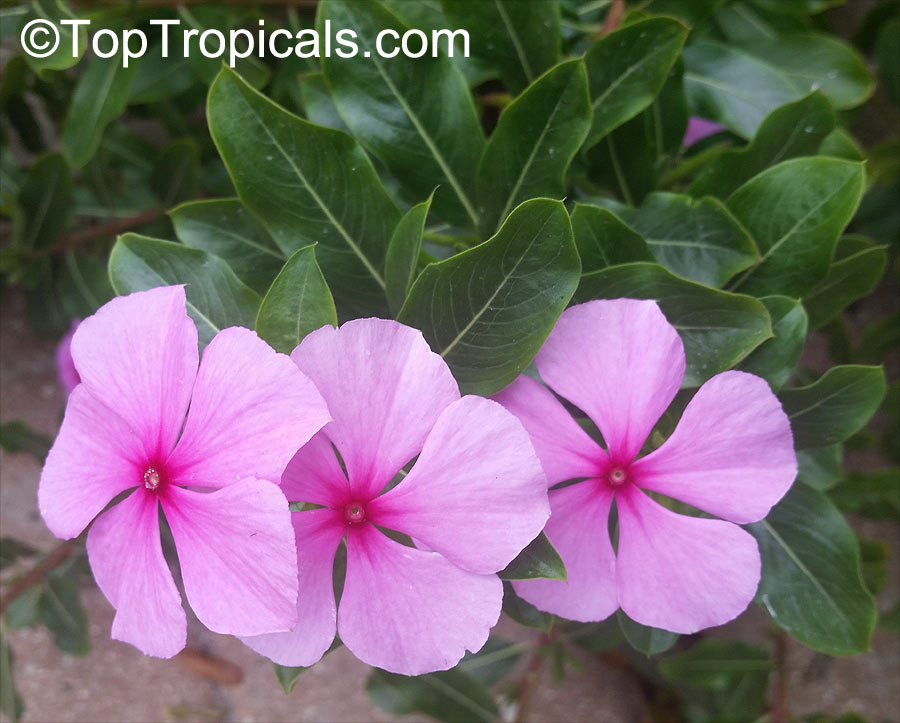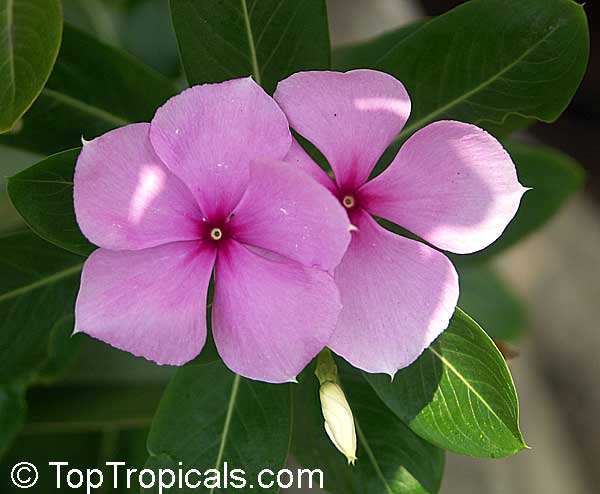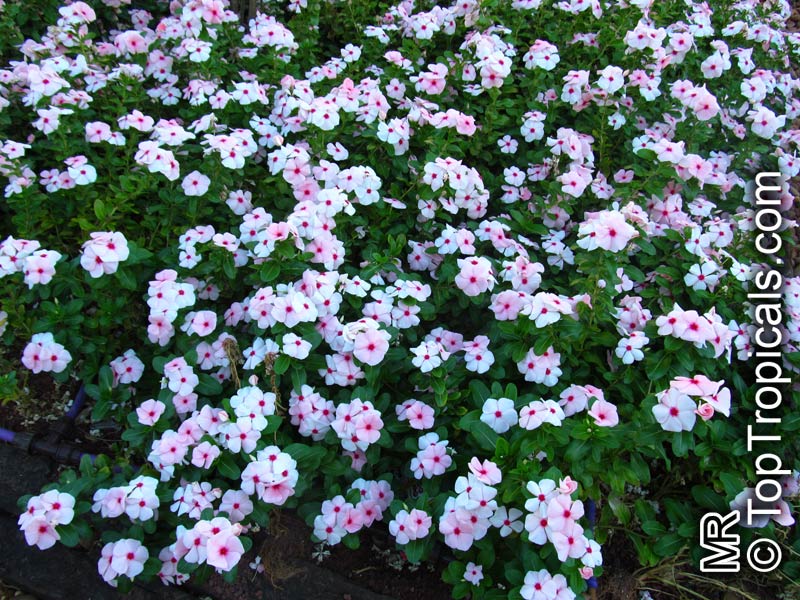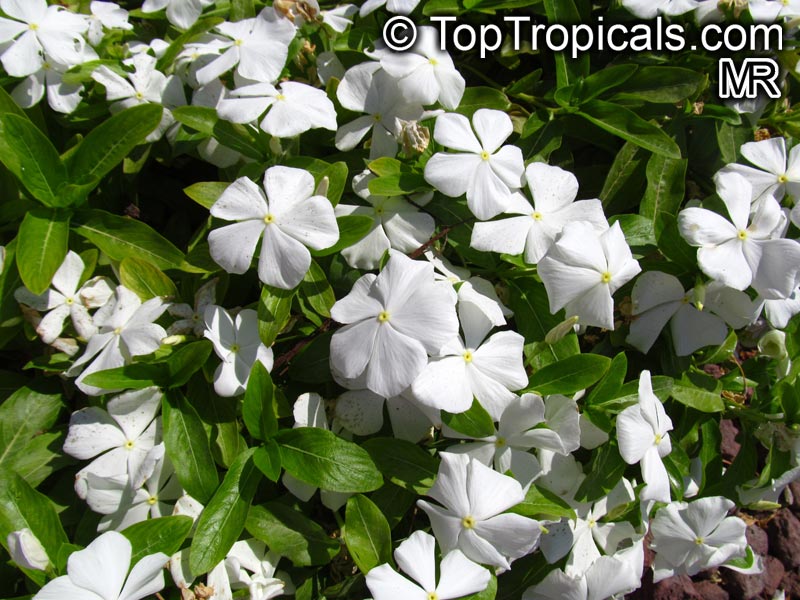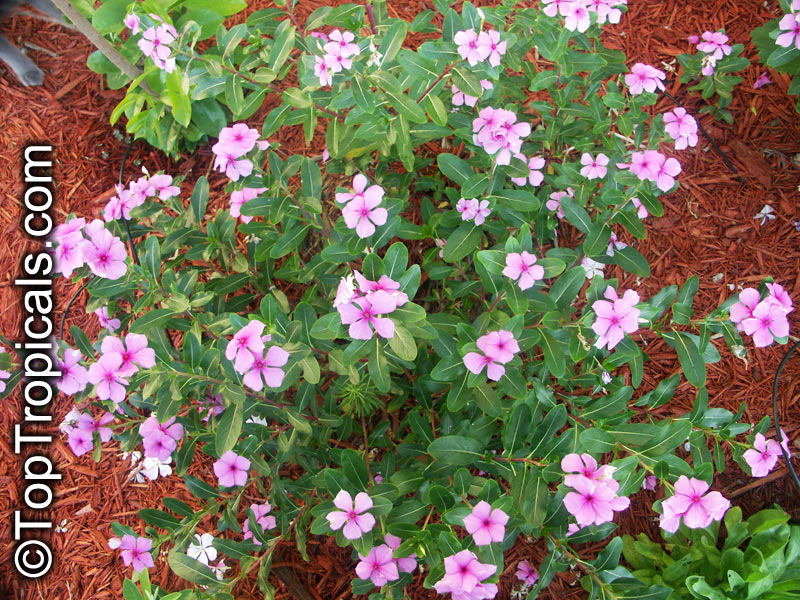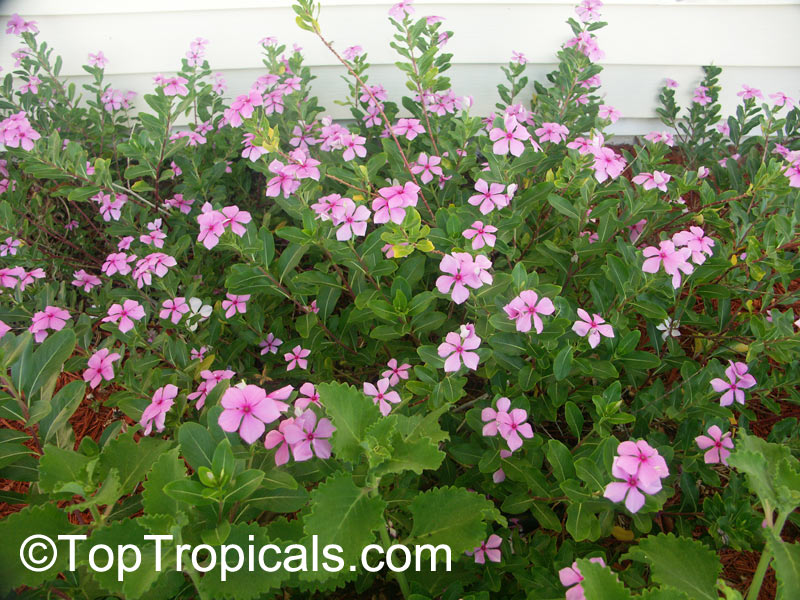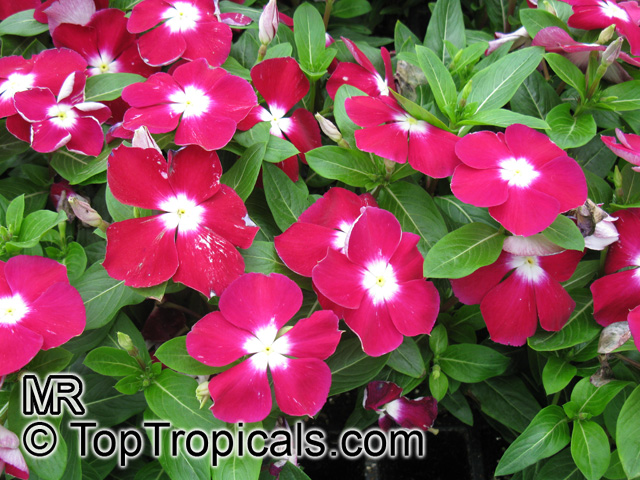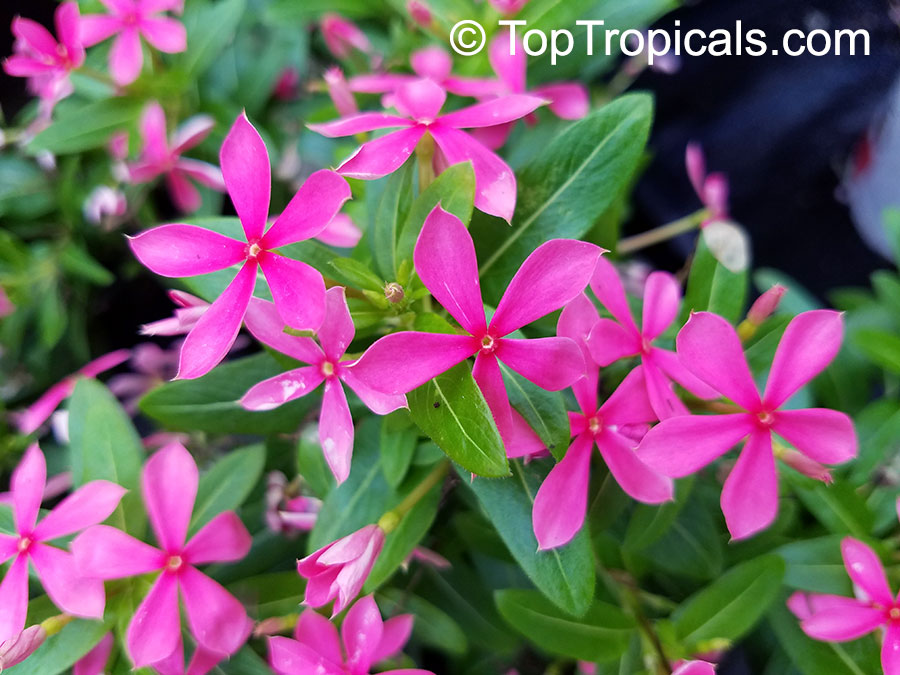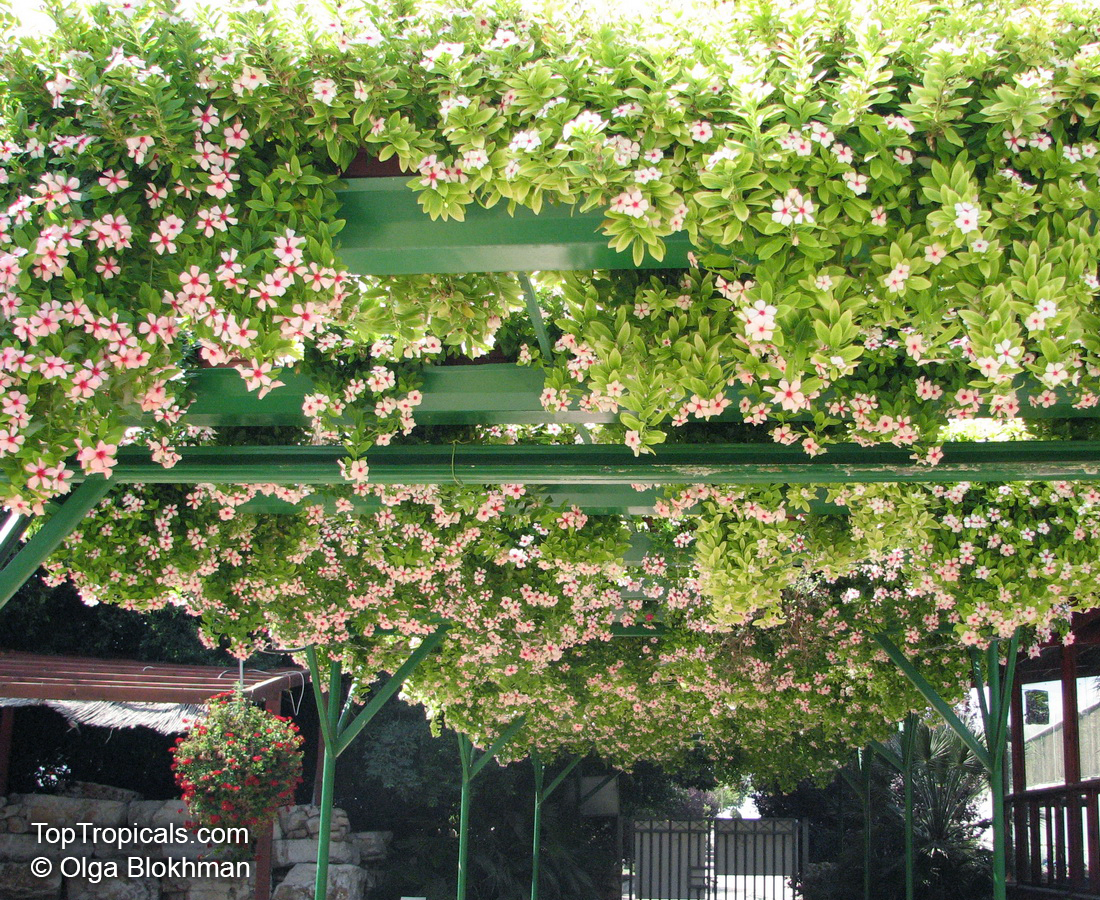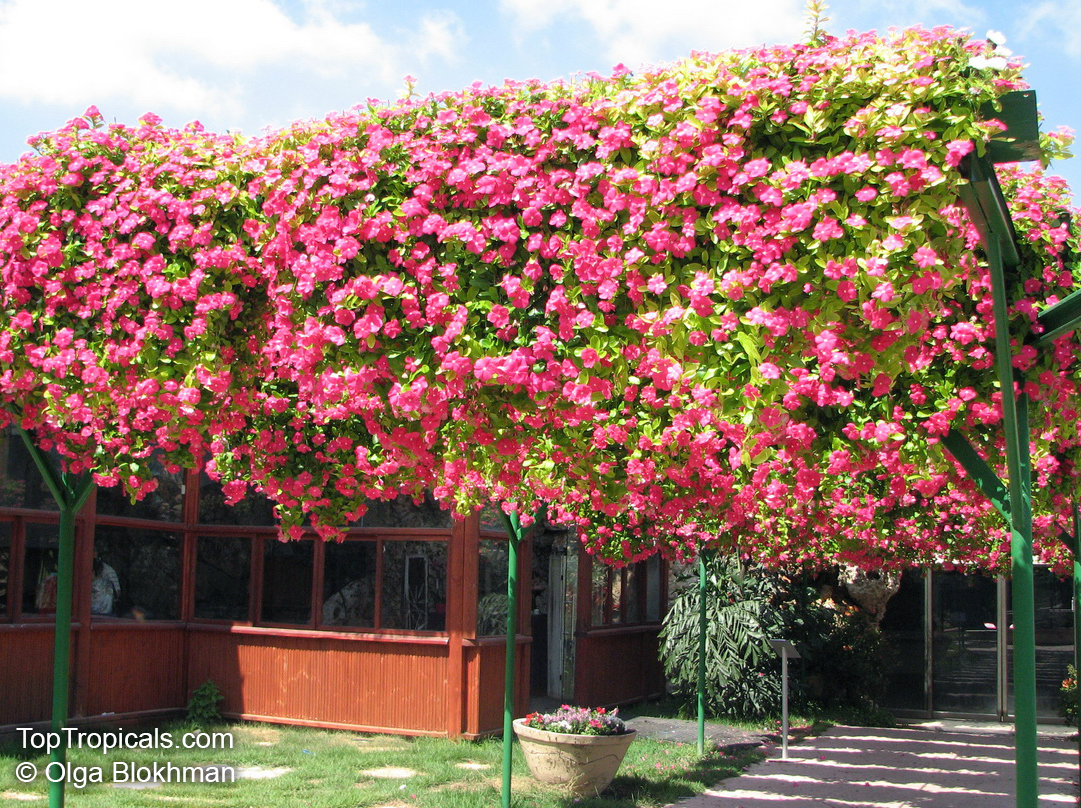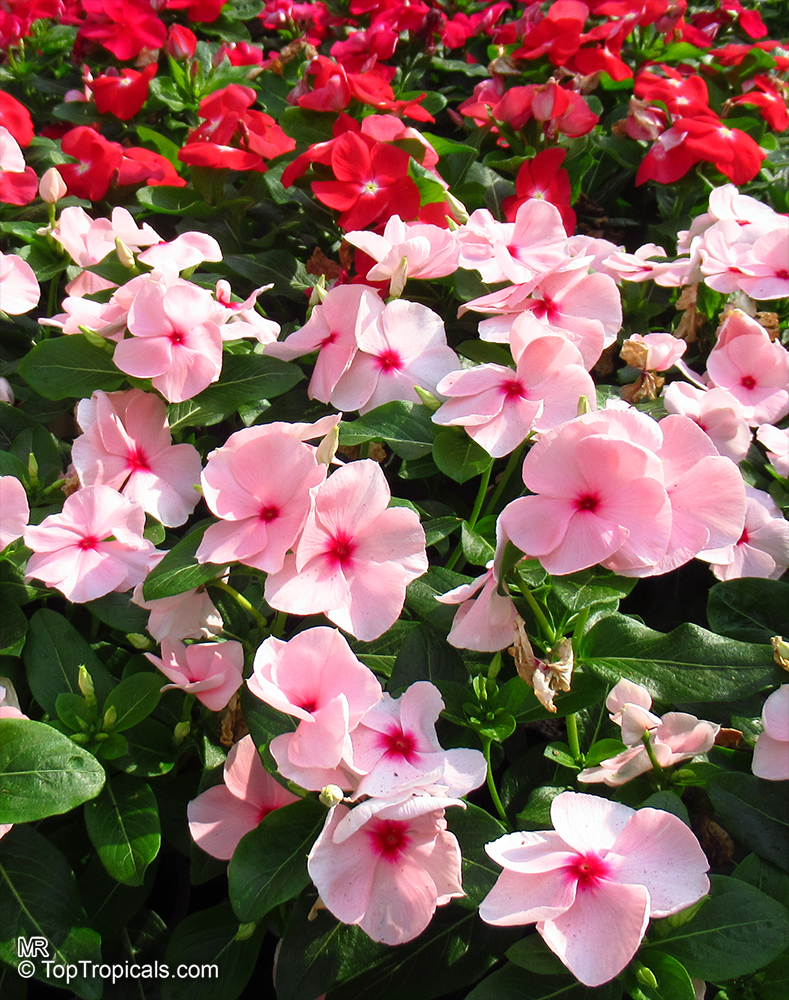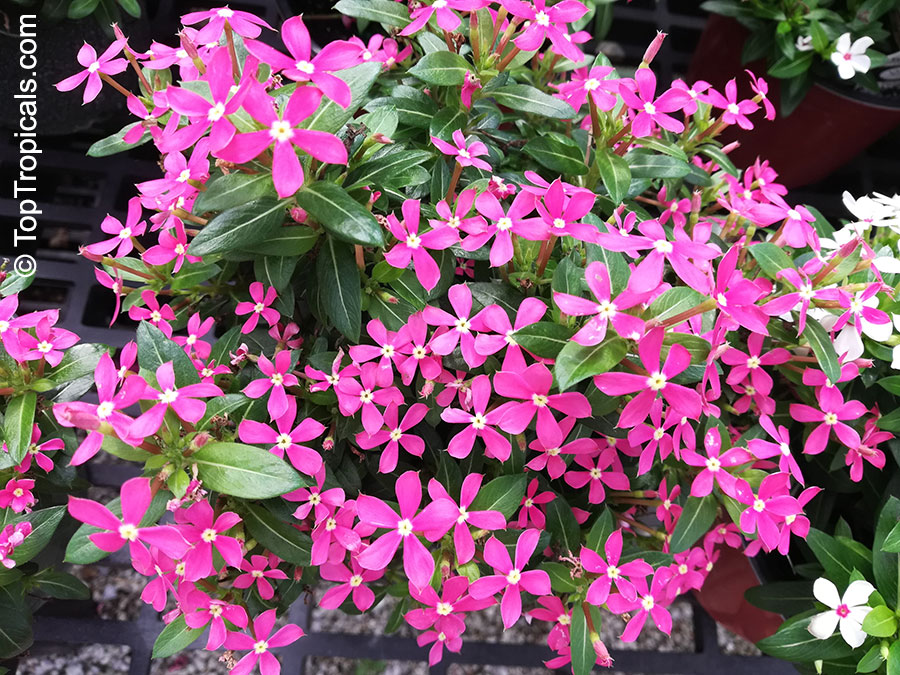Catharanthus roseus (Madagascar Periwinkle)
Top Tropicals Plant Encyclopedia
Botanical names: Catharanthus roseus, Vinca rosea
Common names: Madagascar Periwinkle, Vinca
Family: Apocynaceae
Origin: Madagascar











This small Madagascar native plant is known as the Madagascar periwinkle or Catharanthus roseus. It grows in USDA Zones 9-11. The plant can reach around 2 to 5 feet in height. It prefers full sun or part shade and regular watering, although it can tolerate considerable drought.
The Madagascar periwinkle blooms from spring to fall, producing a profusion of colorful flowers in pink, white, off-white, blue, lavender, purple, red, crimson and vinous. The periwinkle's cheery blooms will attract butterflies, hummingbirds and bees to your garden.
This plant has also been used in ethnomedical treatments. While the plant is mildly irritating, it was used to treat certain conditions such as stomach pain, fever, and diabetes. There are drugs extracted from it: vinblastine (a chemotherapy medication) and vincristine (used in the treatment of leukemia)
In cold regions, Catharanthus roseus is grown in pots and brought indoors during the winter months when temperatures drop. The mature plant should be able to tolerate temperatures at least as low as the mid 30s F for a short period of time. When overwintering, the plant should be grown in bright, indirect light and kept just slightly moist.
This beautiful shrub is a great addition to any garden, as it's not only beautiful, but has a rich history in medicinal treatments.
